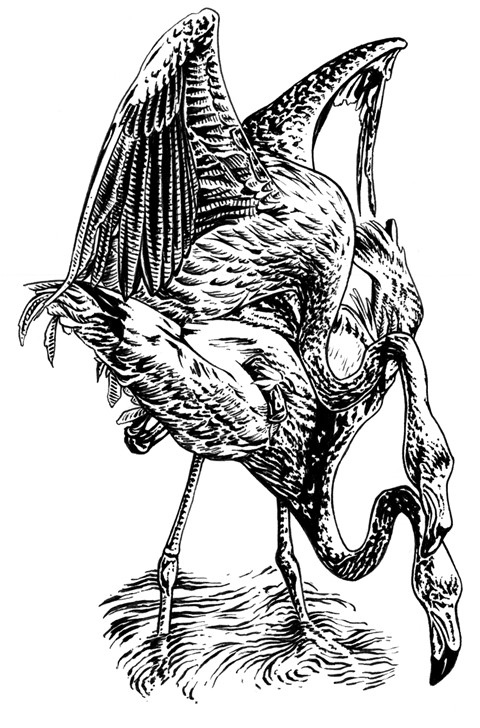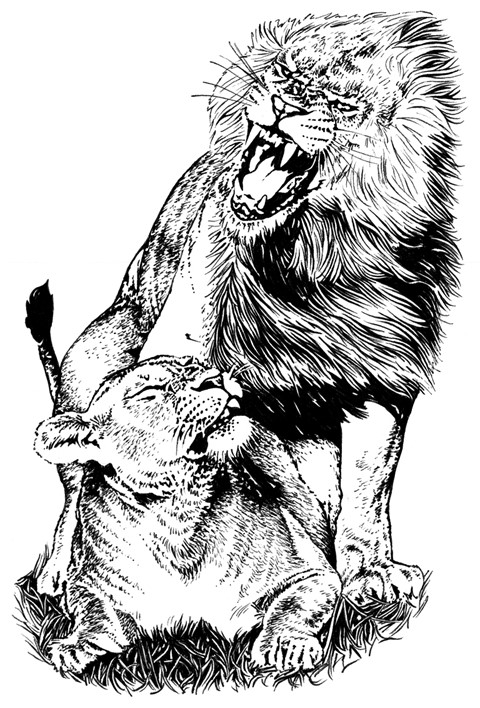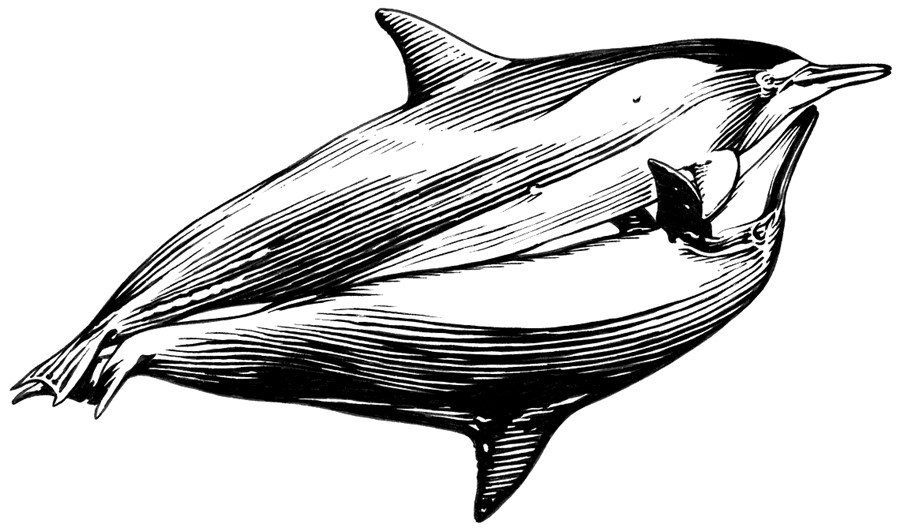Spring – what's it all about? Essentially rebirth, rejuvenation, renewal, resurrection, regrowth and reproduction. To celebrate the friskiest time of the year, we invited illustrator Tom Baxter to illustrate three of mating species...
Spring – what's it all about? Essentially rebirth, rejuvenation, renewal, resurrection, regrowth and, of course, reproduction.
To celebrate the friskiest time of the year, AnOther invited resident illustrator Tom Baxter to draw three mating species, including the dolphin, who, scientists believe, is the only mammal other than humans that has sex for pleasure. Other animals choose not to waste their energy on such activities. Mating for dolphins occurs belly to belly, their streamline silhouettes co-joined in the most elegant fashion. As they become more passionate, they tend to bite the fin, sometimes leaving scars or cuts. This kind of seduction ritual can last quite a long time.
"Mating for dolphins occurs belly to belly, their streamline silhouettes co-joined in the most elegant fashion"
Lions do not mate at any specific time of year, and the females are polyestrous. As with other cats, the male lion's penis has spines which point backwards. Upon withdrawal of the penis, the spines rake the walls of the female's vagina, which may cause ovulation. A lioness may mate with more than one male when she is on heat; during a mating bout, which could last several days, a couple copulates twenty to forty times a day and are likely to forgo eating.
In 2010, a study revealed that a flamingo's feathers become more pink to attract a mate. In courtship, groups of flamingos perform brilliant ritualised stretching and preening when courting begins; males group together and often run with bills pointed toward the sky and necks held straight out. A female will most often initiate copulation by walking away from the group. If a male follows close behind, the female will stop, lower her head, and spread her wings. This behaviour is an invitation to the male to mount her. Mating most often occurs in the water. The male jumps onto the female's back from behind, firmly planting his feet on her wing joints. After mating, the male stands on the female's back, then jumps off over her head. He may then vocalise and shake his wings.
Text by Laura Bradley
Laura Bradley is the Commissioning Editor of AnOther. Tom Baxter is an illustrator currently living and working in London.


